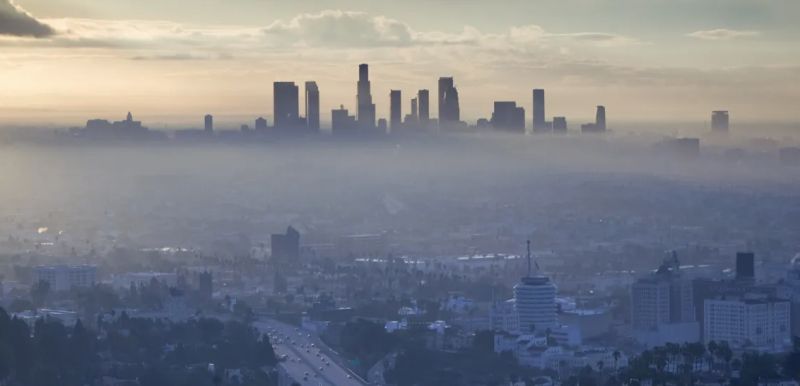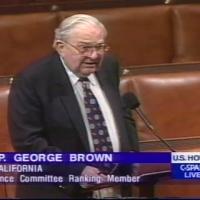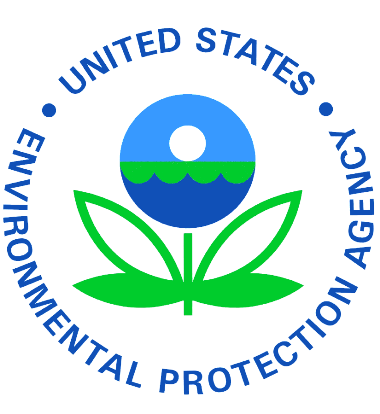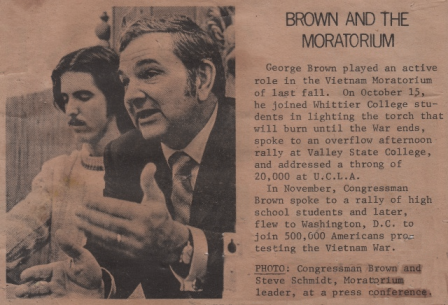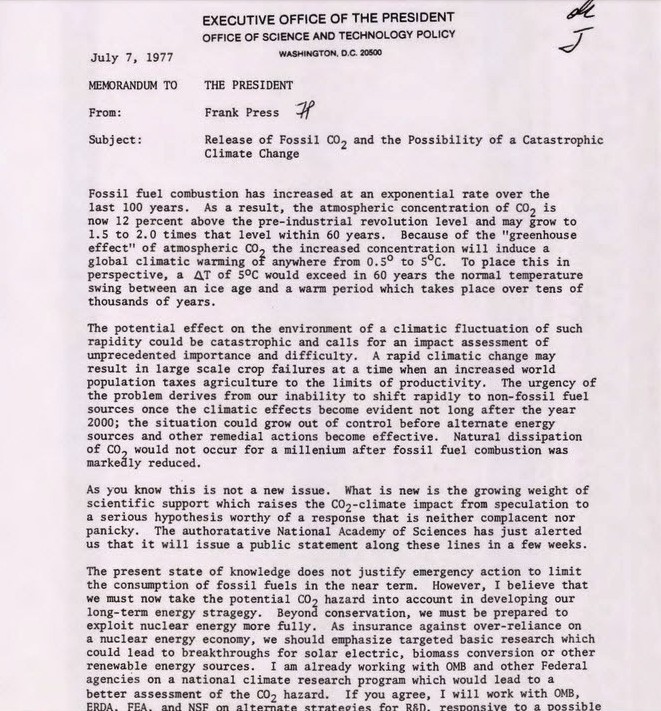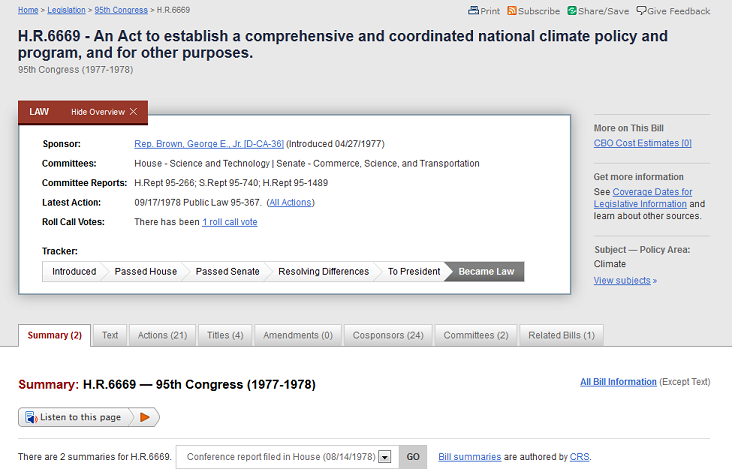File:SMOG be gone.jpg: Difference between revisions
Siterunner (talk | contribs) No edit summary |
Siterunner (talk | contribs) No edit summary |
||
| (18 intermediate revisions by the same user not shown) | |||
| Line 1: | Line 1: | ||
On a clean day, a windy day, LA air pollution can look good (but how is air quality year-to-year) | |||
Los Angeles still has [https://en.wikipedia.org/wiki/Smog '''' | '''GreenPolicy360 Siterunner / Steven Schmidt''': In the 1950s and 1960s, when your GreenPolicy editor was a young person growing up in Los Angeles, California, the people in L.A. breathed some of the dirtiest air in the world. Today, in the second decade of the 21st century, Los Angeles, the 'City of Angels', still has [https://en.wikipedia.org/wiki/Smog ''''SMOG''''], and lots of it, but it’s not nearly as bad as it used to be or it would be if air quality and clean up wasn't taking place over the past five decades. | ||
Here's a quick overview of a cleanup began in the last 1960s and is still happening, even as Los Angeles continues as a location with some of the dirtiest air in the United States. [https://www.greenpolicy360.net/w/California_out_in_front_in_a_Green_future '''California was out in front'''] in the U.S. and, in fact, out in front of world in creating and enforcing air quality regulations. In 1975 the U.S. required new cars to have catalytic converters, “the key piece of technology that allowed everything to change,” according to Mary Nichols, chairman of California’s Air Resources Board. In between, there were years of scientific research, industry denial, politics, protest and an unwavering attachment to the automobile. | |||
Read more at Air Quality/GreenPolicy360 | |||
* https://www.greenpolicy360.net/w/Category:Air_Quality | * https://www.greenpolicy360.net/w/Category:Air_Quality | ||
[[File:SMOG in the Los Angeles basin.png]] | |||
| Line 14: | Line 19: | ||
[ | <big>Local to State to National to Global -- and Back</big> | ||
SJS/GreenPolicy360 Siterunner: The X-ray that the Congressman showed me was that of a child who had grown up in Los Angeles in the 1950s when the air was at its worst. The X-Ray was 'postmortem', the child had died and now the after death examination was displaying the causes of death. | |||
The X-ray George showed me left a strong imprint on my consciousness as a young person growing up in the worst years of LA smog. I had asthma as did many kids and the X-ray was of a kid's lungs, after death. The impairment, the darkness, was evident and George carried on that day, the trained engineer that he was, talking about how 'we' needed to clean the air up, to make LA a model, California a model of what could happen if the people protected the kids. I don't remember all the details of his plan, but I remember the X-ray. | |||
The X-ray was similar to this, [https://www.greenpolicy360.net/w/File:Smog_lung-damage2.jpg '''stark and threatening'''] | |||
George later began to explain how the air "in the LA basin" was stagnant due to the surrounding elevations. He explained in detail how the cars from the post-war boom were pumping gases, pollution, carbon particulates, exhaust fumes into the air and, as the suburbs grew in a way that was unequaled in the world at the time, the air pollution grew as quickly. | |||
Our cars, especially the 'souped-up muscle cars' with [https://www.holley.com/blog/post/holley_4-barrel_the_ultimate_guide/ ''''Holley 4-barrel carbs''''] were the most visible 'culprits' but all the cars were pumping gases into the air. The new freeways, highways, roads being built throughout Southern California were the talk of the town, and the country, but the consequences were DIRT in LUNGS, the kids and their health were suffering especially, and doctors were broadcasting warnings. | |||
Congressman George Brown decided to fix the problem as best he could he said and he used the X-ray to explain why as he gave speeches and rallied support for legislation. With other leaders in the fight for kids, health, breathing and better air, the Clean Air Act of 1970 and a host of solutions came into existence. | |||
Take a look back at some of George's work at the frontlines of environmental protection... | |||
In many ways as a green movement was created, our goal became protecting life. | |||
The environmental work of Californians and those who supported the pioneering (life-supporting) air quality/clean air work would go from California regulations to Federal laws and regulations, and on to cities/nations of around the world as the model 'green best practices' were used to jump start other polluted air regions. | The environmental work of Californians and those who supported the pioneering (life-supporting) air quality/clean air work would go from California regulations to Federal laws and regulations, and on to cities/nations of around the world as the model 'green best practices' were used to jump start other polluted air regions. | ||
The vision of these early 'clean air' next, as George E. Brown explained to GreenPolicy360's siterunner early on, also applied to the air quality "higher up" in the atmosphere. In the early 1970s, scientists were at work, with George and the oversight committee he had become key in 'moving 'n shaking', in the nation's and, as it were, the world's first national/global climate science studies. | The vision of these early 'clean air' next, as George E. Brown explained to GreenPolicy360's siterunner early on, also applied to the air quality "higher up" in the atmosphere. In the early 1970s, scientists were at work, with George and the oversight committee he had become key in 'moving 'n shaking', in the nation's and, as it were, the world's first national/global climate science studies. | ||
From SMOG pollution to ATMOSPHERIC pollution, the trail is there for historians to see ... the low-atmosphere, the high-atmosphere, the consequences, dangers and threats, from breathing and health to climate change and threats to a thriving, living Earth. | From SMOG pollution to ATMOSPHERIC pollution, the trail is there for historians to see ... the low-atmosphere, the high-atmosphere, the consequences, dangers and threats, from breathing and health to climate change and threats to a thriving, living Earth. | ||
The SMOG/clean up the air story is now half a century on --- and at [https://www.greenpolicy360.net/w/GreenPolicy360-eOS '''GreenPolicy360'''] we are attempting to paint a picture of how the story has changed over the years. | |||
| |||
<small>GreenPolicy360 journeys across 50+ years of the modern environmental movement</small> | |||
| |||
[[File:'Thin Blue Layer' of Earth's Atmosphere 2.jpg]] | |||
[http://www.thinbluelayer.com ThinBlueLayer.com] | |||
| |||
* https://www.greenpolicy360.net/w/Category:Air_Pollution | * https://www.greenpolicy360.net/w/Category:Air_Pollution | ||
* https://greenpolicy360.net/w/Category:Air_Quality | * https://greenpolicy360.net/w/Category:Air_Quality | ||
* http://thinbluelayer.com | |||
| Line 56: | Line 82: | ||
* https://www.greenpolicy360.net/w/Category:Climate_Change | * https://www.greenpolicy360.net/w/Category:Climate_Change | ||
* https://www.greenpolicy360.net/w/Category:Climate_Policy | * https://www.greenpolicy360.net/w/Category:Climate_Policy | ||
○ | ○ | ||
'''2022''' | '''2022''' | ||
'''Out in Front''' | '''Out in Front''' | ||
<big><big> | <big><big>'''California Acts to Ban the Sale of New Gasoline Cars'''</big></big> | ||
''The decision, to take effect by 2035, will very likely speed a wider transition to electric vehicles because many other states follow California’s standards'' | ''The decision, to take effect by 2035, will very likely speed a wider transition to electric vehicles because many other states follow California’s standards'' | ||
| Line 104: | Line 133: | ||
* https://www.foxbusiness.com/economy/california-hold-final-hearing-banning-sale-new-gas-cars-2035 | * https://www.foxbusiness.com/economy/california-hold-final-hearing-banning-sale-new-gas-cars-2035 | ||
| Line 109: | Line 140: | ||
[[George E. Brown Jr]] | <big>'''Rep. George E. Brown, East LA | ||
:[[File:George Brown, Sci Com't.jpg]] | |||
:[[George E. Brown Jr]] | |||
<big>'''Back to the Beginnings of Clean Air Action in California, the Nationally'''</big> | |||
| Line 161: | Line 200: | ||
GreenPolicy360 Siterunner: In the early years of the [https://www.greenpolicy360.net/w/Environmental_movement '''modern environmental movement'''], a conscious effort was made to construct a foundation of environmental laws and regulations on which a multi-year environmental protection framework could be built. Your GreenPolicy360 founder was one of those who believed in this constructive paradigm, using model legislation that could be locally developed, often in our state of California, then shared, 'exported' as we used to say, 'to the Feds' for adoption at the national level. The history here provides an ongoing ''modus operandi'' from the 60s and 70s until now as we deal with the pressing local, national, and international/global environmental threats and crises. We, at GreenPolicy360, call this [https://www.greenpolicy360.net/w/Green_Best_Practices '''"green best practices"''']. Best practices is a model for sharing, networking, building on success and action. Templates and models, best practices made openly available, are our plans for having multiplier effects -- and it is our ongoing mission. A strong and resilient legal foundation and framework of environmental laws is an essential part of our overall work. We encourage you to join in as citizens of every nation, within your multiple and diverse legal systems and, we must add, as [https://www.greenpolicy360.net/w/Planet_Citizens '''planet citizens''']. | GreenPolicy360 Siterunner: In the early years of the [https://www.greenpolicy360.net/w/Environmental_movement '''modern environmental movement'''], a conscious effort was made to construct a foundation of environmental laws and regulations on which a multi-year environmental protection framework could be built. Your GreenPolicy360 founder was one of those who believed in this constructive paradigm, using model legislation that could be locally developed, often in our state of California, then shared, 'exported' as we used to say, 'to the Feds' for adoption at the national level. The history here provides an ongoing ''modus operandi'' from the 60s and 70s until now as we deal with the pressing local, national, and international/global environmental threats and crises. We, at GreenPolicy360, call this [https://www.greenpolicy360.net/w/Green_Best_Practices '''"green best practices"''']. Best practices is a model for sharing, networking, building on success and action. Templates and models, best practices made openly available, are our plans for having multiplier effects -- and it is our ongoing mission. A strong and resilient legal foundation and framework of environmental laws is an essential part of our overall work. We encourage you to join in as citizens of every nation, within your multiple and diverse legal systems and, we must add, as [https://www.greenpolicy360.net/w/Planet_Citizens '''planet citizens''']. | ||
| Line 166: | Line 206: | ||
<big>''' | |||
<big>'''Reflections on the Life of George E. Brown'''</big> | |||
| Line 175: | Line 216: | ||
George was a real presence in Congress, in science and environmental achievements, from the first Earth Day to the first federal program to study climate science, from the first earth science research from space to 'big science' projects that carry on to this day. | George was a real presence in Congress, in science and environmental achievements, from the first Earth Day to the first federal program to study climate science, from the first earth science research from space to 'big science' projects that carry on to this day. | ||
Back in the early days, we would speak of these political efforts, and especially the immediate reality of the ' | Back in the early days, we would speak of these political efforts, and especially the immediate reality of the 'SMOG' in LA, which might have been at that time the worst in the world, and how we needed to clean up the air. I spoke of my asthma with George and his engineering background provided his perspective with advantages over the run-of-the-mill politicians in DC in knowing how to best address the pollution from cars, the gas engines that were becoming ubiquitous in fast-growing suburban Southern California. | ||
: George Brown and Steve Schmidt, 1969 | |||
:[[File:Rep George Brown and Steve Schmidt - Oct 15, 1969 - 448x305.png]] | |||
When your GreenPolicy360 siterunner was in college at USC in the late 1960s and becoming deeply involved in politics, George and I continued to speak of the children in Los Angeles and their lung problems and scientific and medical studies that were vividly (shockingly) demonstrating the consequences of growing up in the most polluted air in the country. | When your GreenPolicy360 siterunner was in college at USC in the late 1960s and becoming deeply involved in politics, George and I continued to speak of the children in Los Angeles and their lung problems and scientific and medical studies that were vividly (shockingly) demonstrating the consequences of growing up in the most polluted air in the country. | ||
| Line 183: | Line 232: | ||
As George became a leader in Congress and ran for U.S. Senate, opposing the Vietnam war and I helped organize in DC what became the largest anti-war group, the Vietnam Moratorium Committee, we spoke of war and peace and [http://www.greenpolicy360.net/w/File:George_Brown_1969-Reflections_on_US_Role_in_the_World.png how to change the nation's war policies and role in the world]. His efforts to change U.S. foreign policy and support the peace movement, "teach ins", and environmental protection helped to organize the [https://www.greenpolicy360.net/w/Earth_Day_Memories_on_the_50th_Anniversary '''first Earth Day'''.] | As George became a leader in Congress and ran for U.S. Senate, opposing the Vietnam war and I helped organize in DC what became the largest anti-war group, the Vietnam Moratorium Committee, we spoke of war and peace and [http://www.greenpolicy360.net/w/File:George_Brown_1969-Reflections_on_US_Role_in_the_World.png how to change the nation's war policies and role in the world]. His efforts to change U.S. foreign policy and support the peace movement, "teach ins", and environmental protection helped to organize the [https://www.greenpolicy360.net/w/Earth_Day_Memories_on_the_50th_Anniversary '''first Earth Day'''.] | ||
| |||
<big><big>'''[[Earth Day]]'''</big></big> | |||
[[File:Earth Day memories.png]] | |||
* https://www.greenpolicy360.net/w/File:Earth_Day_memories.png | |||
| Line 289: | Line 334: | ||
[[Category:Air Quality]] | [[Category:Air Quality]] | ||
[[Category:Air Pollution]] | [[Category:Air Pollution]] | ||
[[Category:Atmospheric Science]] | |||
[[Category:California]] | [[Category:California]] | ||
[[Category:Clean Air]] | [[Category:Clean Air]] | ||
[[Category:Earth Science]] | |||
[[Category:Ecology Studies]] | |||
[[Category:Education]] | |||
[[Category:Environmental Laws]] | [[Category:Environmental Laws]] | ||
[[Category:Environmental Protection]] | [[Category:Environmental Protection]] | ||
Latest revision as of 18:46, 22 August 2024
On a clean day, a windy day, LA air pollution can look good (but how is air quality year-to-year)
GreenPolicy360 Siterunner / Steven Schmidt: In the 1950s and 1960s, when your GreenPolicy editor was a young person growing up in Los Angeles, California, the people in L.A. breathed some of the dirtiest air in the world. Today, in the second decade of the 21st century, Los Angeles, the 'City of Angels', still has 'SMOG', and lots of it, but it’s not nearly as bad as it used to be or it would be if air quality and clean up wasn't taking place over the past five decades.
Here's a quick overview of a cleanup began in the last 1960s and is still happening, even as Los Angeles continues as a location with some of the dirtiest air in the United States. California was out in front in the U.S. and, in fact, out in front of world in creating and enforcing air quality regulations. In 1975 the U.S. required new cars to have catalytic converters, “the key piece of technology that allowed everything to change,” according to Mary Nichols, chairman of California’s Air Resources Board. In between, there were years of scientific research, industry denial, politics, protest and an unwavering attachment to the automobile.
Read more at Air Quality/GreenPolicy360
A 'SMOG' Life & Death Story
Local to State to National to Global -- and Back
SJS/GreenPolicy360 Siterunner: The X-ray that the Congressman showed me was that of a child who had grown up in Los Angeles in the 1950s when the air was at its worst. The X-Ray was 'postmortem', the child had died and now the after death examination was displaying the causes of death.
The X-ray George showed me left a strong imprint on my consciousness as a young person growing up in the worst years of LA smog. I had asthma as did many kids and the X-ray was of a kid's lungs, after death. The impairment, the darkness, was evident and George carried on that day, the trained engineer that he was, talking about how 'we' needed to clean the air up, to make LA a model, California a model of what could happen if the people protected the kids. I don't remember all the details of his plan, but I remember the X-ray.
The X-ray was similar to this, stark and threatening
George later began to explain how the air "in the LA basin" was stagnant due to the surrounding elevations. He explained in detail how the cars from the post-war boom were pumping gases, pollution, carbon particulates, exhaust fumes into the air and, as the suburbs grew in a way that was unequaled in the world at the time, the air pollution grew as quickly.
Our cars, especially the 'souped-up muscle cars' with 'Holley 4-barrel carbs' were the most visible 'culprits' but all the cars were pumping gases into the air. The new freeways, highways, roads being built throughout Southern California were the talk of the town, and the country, but the consequences were DIRT in LUNGS, the kids and their health were suffering especially, and doctors were broadcasting warnings.
Congressman George Brown decided to fix the problem as best he could he said and he used the X-ray to explain why as he gave speeches and rallied support for legislation. With other leaders in the fight for kids, health, breathing and better air, the Clean Air Act of 1970 and a host of solutions came into existence.
Take a look back at some of George's work at the frontlines of environmental protection...
In many ways as a green movement was created, our goal became protecting life.
The environmental work of Californians and those who supported the pioneering (life-supporting) air quality/clean air work would go from California regulations to Federal laws and regulations, and on to cities/nations of around the world as the model 'green best practices' were used to jump start other polluted air regions.
The vision of these early 'clean air' next, as George E. Brown explained to GreenPolicy360's siterunner early on, also applied to the air quality "higher up" in the atmosphere. In the early 1970s, scientists were at work, with George and the oversight committee he had become key in 'moving 'n shaking', in the nation's and, as it were, the world's first national/global climate science studies.
From SMOG pollution to ATMOSPHERIC pollution, the trail is there for historians to see ... the low-atmosphere, the high-atmosphere, the consequences, dangers and threats, from breathing and health to climate change and threats to a thriving, living Earth.
The SMOG/clean up the air story is now half a century on --- and at GreenPolicy360 we are attempting to paint a picture of how the story has changed over the years.
GreenPolicy360 journeys across 50+ years of the modern environmental movement
- https://www.greenpolicy360.net/w/Category:Air_Pollution
- https://greenpolicy360.net/w/Category:Air_Quality
- http://thinbluelayer.com
- https://www.greenpolicy360.net/w/Environmental_Protection_Agency
- https://www.greenpolicy360.net/w/National_Environmental_Policy_Act
- https://www.greenpolicy360.net/w/File:Env_policy_laws_US_%27the_beginning%27_of_env_era.jpg
- https://www.greenpolicy360.net/w/George_E._Brown_Jr
- https://www.greenpolicy360.net/w/Earth_Day_Memories_on_the_50th_Anniversary
- https://www.greenpolicy360.net/w/File:US_Public_Law_95-367.png
- https://www.greenpolicy360.net/w/Category:Climate_Change
- https://www.greenpolicy360.net/w/Category:Climate_Policy
○
2022
Out in Front
California Acts to Ban the Sale of New Gasoline Cars
The decision, to take effect by 2035, will very likely speed a wider transition to electric vehicles because many other states follow California’s standards
After the California Air Resources Board approved Thursday regulations that ban the sale of new gas-engine vehicles by 2035, requiring all new cars to run on electricity or hydrogen, California Gov. Gavin Newsom told ABC News he was confident that more states would do the same to help combat climate change.
BY THE TIMES EDITORIAL BOARD | AUG. 26, 2022
It’s hard to overstate the significance of California’s move this week to end the sale of new gas-powered cars.
The California Air Resources Board’s vote Thursday setting a firm 2035 deadline is huge and consequential for climate change, air quality and health. The nation’s most populated and worst-polluted state is the first to adopt rules that will finally stop adding gas-fueled passenger vehicles to its roads.
The end of the internal combustion engine era, and the toll on our lungs and our planet, is finally on the horizon.
This regulation will require automakers to sell increasing percentages of zero-emission and plug-in hybrid vehicles starting with 35% of new car sales in 2026, reaching 68% in 2030 and 100% by 2035. Zero-emission vehicles account for 16.5% of California’s new sales today, a rate that leads the nation but lags behind Europe and China. So these rules help reestablish California’s climate leadership, putting it in step with other leading nations and making it one of the first — and the largest — vehicle markets in the world to require 100% of new sales be zero emissions.
It’s a pivotal moment for a state that has been shaped for decades, often negatively, by automobiles and the health-damaging pollution they generate.
More on California's decision to drive forward into a new world of transportation
- ~
○
Rep. George E. Brown, East LA
Back to the Beginnings of Clean Air Action in California, the Nationally
Memories by GreenPolicy360's founder of Rep. George E. Brown, a first mover in California then in the US Congress for three decades pushing for environmental protection, health, and science going forward -- the creation of the EPA, the Clean Air Act, the first generation and foundation of environmental laws that are a generational contribution.
My Friend George
In his rumpled suits and quiet way George E. Brown moved to form coalitions few thought could be formed and garnered support for the first set of U.S. Congressional acts that served as foundation legislation for decades of green progress.
The First Earth Day: Personal Memories by Steven Schmidt of George's Role
Congressman Brown's work advanced environmental air quality and clean air legislation. He introduced the nation's first bill to ban lead in gasoline and was at the forefront of the Clean Air Act. He attacked Los Angeles smog, some of the worst air quality of any city in the world at the time and the air standards that came out of California became models worldwide. He succeeded in clean air and water efforts, though rarely given credit given his quiet approach to accomplishing big picture goals.
George was a key player in legislation founding the Environmental Protection Agency.
As the LA Times noted (without pomp or circumstance) in George's obituary in 1999: "He championed the creation of the federal Environmental Protection Agency". The creation of the EPA was in many ways Congressman George Brown's vision achieved..."
George worked tirelessly in Congress for change. With saving and protecting the environment in his sight, he moved conservative and liberal politicians in his direction. George saw connections that transcended states and nations. A key goal was setting up an EPA as an umbrella agency to coordinate environmental federal and federal-state efforts...
George was a "first-mover" as the term has come to be known. He had a big-picture plan and set out to accomplish it. He succeeded on multiple fronts, pushing forward the idea and the vision for 'omnibus' legislation. The Environmental Protection Agency was founded and historic initial green laws and regulations for environmental protection and security were passed.
The founding of the EPA was based on new realizations of science and the environment. The vision of the "Whole Earth" that began with unprecedented Apollo photos on the cover of Life magazine in January 1969 led to a coming together of education, students 'teach-ins', scientific space missions studying earth systems for the first time, and popular demands for environmental protections.
A leader and a chairperson on the House science committee for over 30 years, George legislatively engineered an array of science efforts, including one that greens look to as prescient -- climate science.
From California to the World
GreenPolicy360 Siterunner: In the early years of the modern environmental movement, a conscious effort was made to construct a foundation of environmental laws and regulations on which a multi-year environmental protection framework could be built. Your GreenPolicy360 founder was one of those who believed in this constructive paradigm, using model legislation that could be locally developed, often in our state of California, then shared, 'exported' as we used to say, 'to the Feds' for adoption at the national level. The history here provides an ongoing modus operandi from the 60s and 70s until now as we deal with the pressing local, national, and international/global environmental threats and crises. We, at GreenPolicy360, call this "green best practices". Best practices is a model for sharing, networking, building on success and action. Templates and models, best practices made openly available, are our plans for having multiplier effects -- and it is our ongoing mission. A strong and resilient legal foundation and framework of environmental laws is an essential part of our overall work. We encourage you to join in as citizens of every nation, within your multiple and diverse legal systems and, we must add, as planet citizens.
🌎
Reflections on the Life of George E. Brown
SJS / GreenPolicy Siterunner: George was the man who convinced me to look at politics as a serious calling. When I was a young teenager in East LA, looking out at a larger world in which I had yet to travel, and debating nuclear proliferation, the debate topic of the year as high schools were considering why sirens were on occasion loudly going off and forcing us to crawl under our desks, the man I got to know in Monterey Park was at the beginning of his career in politics and science.
For the next 35 years he was my mentor and an inspiration of what can be done to make a difference and create a better world. George was a visionary with tousled hair, a professorial look, a smelly pipe and a twinkle in his eye. He was always there for his constituents, like me, an East LA kid who grew up to be a friend and cohort as we did green work over the years.
George was a real presence in Congress, in science and environmental achievements, from the first Earth Day to the first federal program to study climate science, from the first earth science research from space to 'big science' projects that carry on to this day.
Back in the early days, we would speak of these political efforts, and especially the immediate reality of the 'SMOG' in LA, which might have been at that time the worst in the world, and how we needed to clean up the air. I spoke of my asthma with George and his engineering background provided his perspective with advantages over the run-of-the-mill politicians in DC in knowing how to best address the pollution from cars, the gas engines that were becoming ubiquitous in fast-growing suburban Southern California.
- George Brown and Steve Schmidt, 1969
When your GreenPolicy360 siterunner was in college at USC in the late 1960s and becoming deeply involved in politics, George and I continued to speak of the children in Los Angeles and their lung problems and scientific and medical studies that were vividly (shockingly) demonstrating the consequences of growing up in the most polluted air in the country.
George helped my organizing work and I helped his especially in the "decade of the environment" following the first Earth Day in 1970 and the building of a foundation of environmental legislation.
As George became a leader in Congress and ran for U.S. Senate, opposing the Vietnam war and I helped organize in DC what became the largest anti-war group, the Vietnam Moratorium Committee, we spoke of war and peace and how to change the nation's war policies and role in the world. His efforts to change U.S. foreign policy and support the peace movement, "teach ins", and environmental protection helped to organize the first Earth Day.
George was among the first voices to be raised warning about the environmental threat of climate disruption and, although few realize, he was at the forefront of the initial efforts to study the climate, pushing the development of initial atmospheric science programs and missions of NASA and public/private research. He combined his engineering skills with his legislative reach.
George E. Brown, in fact, drafted the "National Climate Program Act" of 1978.
1978 Climate Act PDF via GreenPolicy360
Rep. George Brown brought his extensive work with U.S. top scientists, featured in the work of 1977's Energy and Climate Report of the National Academy of Sciences and follow on 1979 Academy Climate Science report that was presciently accurate in its predictions.
The Congressman-Engineer emphasized, constantly to me and in his work, the essential important of having accurate data in order to make the best possible engineering decisions. He imprinted, if I could use this word to its fullest meaning, the vital nature of gathering information with studies over time to monitor changes. He was in a position, one of the most powerful positions in government, to shape the policies of science -- atmospheric science, earth science, big science.
🌎
Here's to George Brown and the many visionaries, thinkers and doers who have carried on preserving and protecting our home planet.
As George and I worked over many years we both grew in our politics as together and separately we advocated for peace and environmental protection. Big science was at the center of much of George's future-looking agenda. He believed in green politics and was a mentor to me and many.... He became a leader in Congress from California who helped shape the modern environmental movement.
California out in front in a Green future
Today many of the actions of George Brown continue as models for citizens, cities and nations of the world. California and a green political/environmental protection movement that George helped to begin continue to be out in front with ideas to improve quality of life.
In our GreenPolicy360 work, George's work continues. Even as political opposition to environmental work, anti-nuclear work, anti-war work is at risk, as we look out at a strategic horizon with pressing demands, the foundations put in place by an earlier generation remain strong.
Planet Citizens | Planet Citizens, Planet Scientists
George Brown's work remains with us in his legacy of accomplishment. I miss him often but know he is still around. I feel him when I write of green ideas and look to our kids and education and our shared future...
Let's look at some of what George accomplished before his untimely passing in 1999:
George was instrumental in proposing and establishing the Presidential Office of Science and Technology Policy in 1976. He was working alongside the National Academy of Sciences as they released a first-ever climate report in 1977. In 1977 he and the new Office of Science and Technology sent a first government warning of "climatic fluctuation" and "catastrophic" change to President Carter:
Congressman Brown Out in Front of Climate Action
At the Beginning of U.S. Science on Global Warming, Strategies & Planning
1978, the First Climate Actions
In 1979 came the first follow-on National Science Academy report. This study and report of national scientists was prescient and accurate in its global warming predictions.
First National Climate Act, Historic Work, 1978
GreenPolicy360 Siterunner / SJS: The beginnings of modern environmental and climate science can be traced to the 1960s and 1970s. The U.S. National Academy of Sciences played a key role in laying a foundation of scientific reports and data.
Energy and Climate Report, 1977, National Academy of Sciences / 175 pp. / PDF via GreenPolicy360
Rep. George Brown took the findings of the 1977 Energy and Climate Report from the Academy of Sciences and made the science actionable. In a historic moment, he proposed and drafted the legislation of the first U.S. National Climate Program and shepherded its passage in 1978.
This first federal program established to study and assess scientifically the issues and risks of human-caused climate change became a foundation for comprehensive initiatives, with an array of new Earth Science missions led by NASA and NOAA, the EPA and USGS.
File history
Click on a date/time to view the file as it appeared at that time.
| Date/Time | Thumbnail | Dimensions | User | Comment | |
|---|---|---|---|---|---|
| current | 14:21, 31 December 2016 |  | 700 × 700 (78 KB) | Siterunner (talk | contribs) |
You cannot overwrite this file.
File usage
The following 9 pages use this file:
- Air Quality
- Air Pollution
- Atmospheric Science
- California
- Clean Air
- Earth Science
- Ecology Studies
- Education
- Environmental Laws
- Environmental Protection
- Green Best Practices
- Green Politics
- Health
- Los Angeles
- New Definitions of National Security
- Planet Citizens, Planet Scientists
- Pollution
- Strategic Demands
- US Environmental Protection Agency
